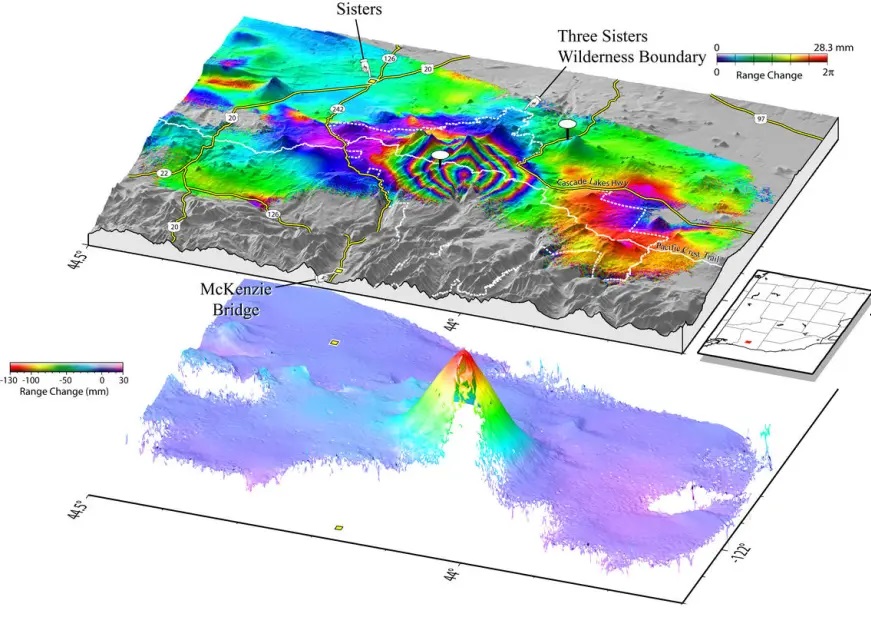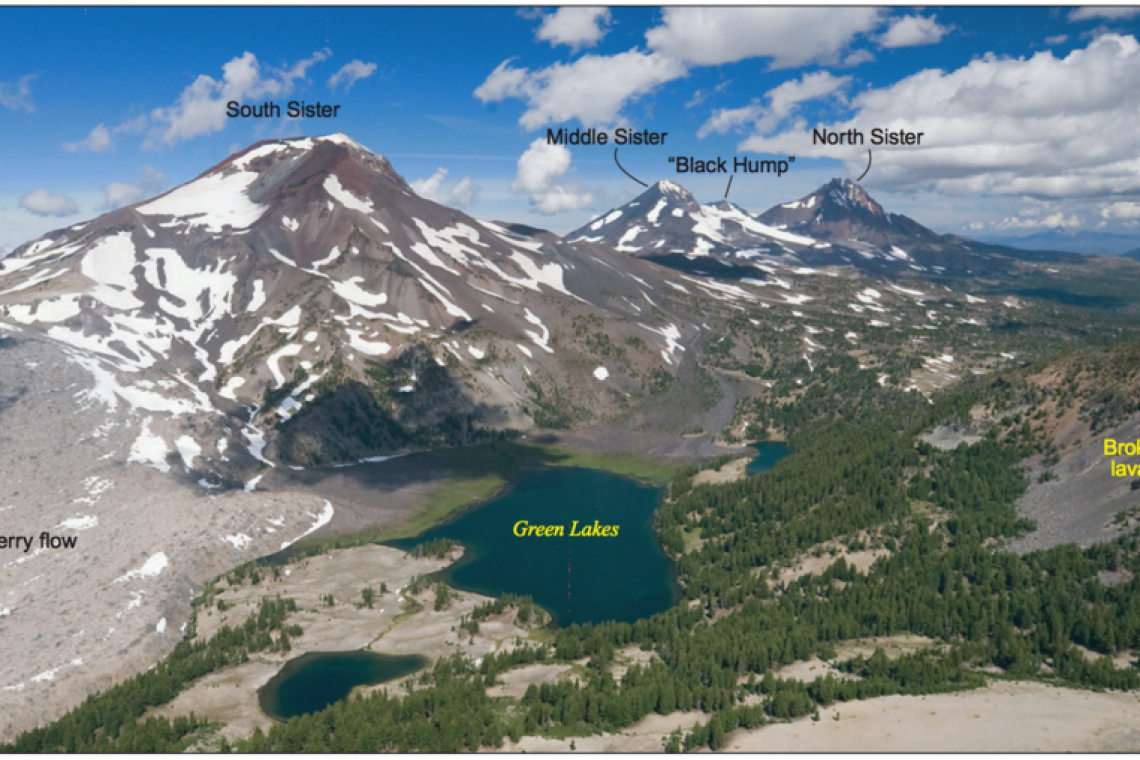Portland, Oregon — The Pacific Northwest is well known for its stunning summits and plentiful peaks, but are the mountains moving?
In a USGS Hazard Notification statement Monday, Cascades Volcano Observatory announced their scientists have tracked an increased rate of ground uplift in the Three Sisters volcanic region found in the southwest corner of Oregon.
Using satellite radar images and GPS units, USGS scientists have tracked an increased rate of uplift for a 12-mile diameter region, 3 miles west of the South Sister volcano. According to USGS, the data suggests the ground rose 0.9 inches (2.2 cm) from June 2020 to August 2021.

Scott Burns, a geology professor at Portland State University, told Nexstar’s KOIN that while episodes of increased uplift have been observed in this region before, the cause is what local scientists are excited about.
“The Three Sisters area is an area that we’ve been studying for the last 25 years,” Burns explained. “It’s very exciting because magma is moving up underneath the volcano … the last major volcanic eruption in Oregon, which was 2,000 years ago, was right there in that area.”
While the catalyst for the current uplift is unconfirmed, geologists have been able to credit previous soil shifts at the South Sister location to small pulses of magma accumulating approximately 4 miles below the earth’s surface.
According to Burns, increased uplift is not the only thing impacted by the observed magmatic intrusion.
“We believe that the magma is rising about four miles below the surface. And, and so associated with that, a lot of times you’ll have very small earthquakes,” Burns said. “In December and in January, we had a series of very small earthquakes, showing that there is some movement of magma. The question is, what type of magma is it going to be, and what type of volcano?”
Before the recent increase, the USGS stated the rate of uplift at the South Sister location had reportedly slowed down since scientists first recognized the phenomenon in the mid-1990s.
“From 1995 to 2020, the area rose approximately 12 inches (30 centimeters) at its center,” USGS stated in a recent release. “Although the current uplift rate is slower than the maximum rate of about 2 inches per year measured in 1999-2000, it is distinctly faster than the rate observed for several years before 2020.”
Despite the excitement, USGS and Burns have said that the public is not in any immediate danger. The volcano status is currently listed as “green,” and there is no sign of an imminent eruption.
“While any magmatic intrusion could eventually lead to a volcanic eruption, an eruption would likely be preceded by detectable and more vigorous earthquakes, ground movement (deformation), and geochemical changes,” stated USGS. “In general, as magma moves upward during an intrusion, it causes continued or accelerated uplift, fractures rock to generate swarms of earthquakes, and releases significant amounts of volcanic gases, such as carbon dioxide. We do not detect any of these signs currently.”
Burns told KOIN a team of scientists with Cascades Volcano Observatory will continue to closely monitor uplift at the site and will be ready if a threat is detected.
“We have great maps for the whole Three Sisters area,” Burns explained, “So if the volcano does come back to life, we will know which people are going to have to get out of the way and be prepared for it.”
He continued, “The good news is we’re prepared for it … We’re still at ‘green,’ but things are coming back to life now. Mother Nature writes her own history book, so it will be interesting to see what she will come up with this time.”


